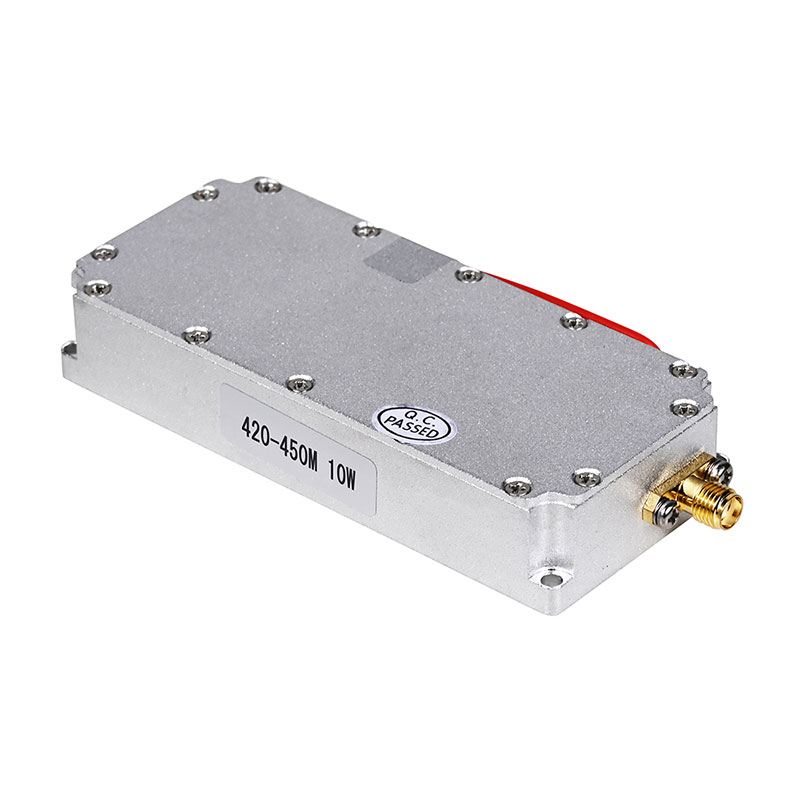Anti-Drone Module: Enhancing Security in a Drone-Dominated World
2025-05-07
In recent years, the rapid growth of drone technology has brought about countless benefits, from advancements in photography and logistics to agriculture and surveillance. However, alongside these advantages, drones have also introduced new security challenges. The ability of drones to fly discreetly and access restricted areas has raised concerns in both private and public sectors. As a result, the need for effective countermeasures has led to the development of Anti-Drone Modules. These modules are designed to detect, track, and neutralize drones that pose a potential threat. In this article, we will explore the concept of anti-drone technology, its components, applications, and the growing importance of anti-drone modules in modern security systems.

What is an Anti-Drone Module?
An Anti-Drone Module is a security system designed to detect, track, and mitigate threats posed by unauthorized drones. These modules use a combination of hardware and software technologies to identify drone activity and prevent them from entering restricted or sensitive areas. Anti-drone systems can operate using various methods, such as signal jamming, GPS spoofing, and physical interception, depending on the specific security requirements of the area being protected.
Components of an Anti-Drone Module
Anti-drone modules typically consist of several key components that work together to detect, track, and neutralize drones:
1. Detection Systems
Detection is the first step in counteracting a drone threat. Anti-drone systems use a variety of sensors to identify the presence of drones, including:
Radar Systems: These systems use radio waves to detect moving objects, including drones. They are effective in detecting drones at long ranges, even in low visibility conditions.
Radio Frequency (RF) Sensors: Drones often rely on radio signals for communication with the operator. RF sensors can detect these signals and identify the presence of a drone.
Optical and Infrared Cameras: Cameras with high-resolution imaging and infrared capabilities can be used to visually detect drones, especially in more localized settings. These systems are useful for tracking drones during the daytime and at night.
Acoustic Sensors: These sensors listen for the distinct noise produced by drone motors and propellers, helping to identify drones that may be operating out of sight.
2. Tracking Systems
Once a drone is detected, the next step is tracking its movement. Tracking systems use advanced algorithms and multiple sensors to monitor the location, speed, and trajectory of the drone. Some tracking systems can also provide real-time data to security personnel or automated response systems.
3. Neutralization Mechanisms
After detection and tracking, the anti-drone system must neutralize the threat. Various methods can be employed to stop the drone from continuing its flight or entering restricted airspace:
Signal Jamming: One of the most common techniques for neutralizing drones is jamming their communication signals. By disrupting the control signals between the drone and its operator, the system forces the drone to either return to its starting point (via GPS) or land safely.
GPS Spoofing: By sending out fake GPS signals, anti-drone modules can manipulate the drone’s navigation system, causing it to lose its bearings or follow a different route to a safe landing.
Physical Interception: Some advanced systems use projectiles or nets to physically intercept and capture drones. This method is more complex and typically reserved for critical applications where drones need to be neutralized without causing damage to the environment.
Directed Energy (Laser Systems): In some cases, high-energy lasers can be used to disable or destroy drones. These systems use focused beams of energy to damage the drone's electronics or cause it to crash.
4. Command and Control Systems
Anti-drone modules often come with integrated command and control systems that allow operators to monitor, manage, and control the system. These systems provide real-time data on drone activity and give security personnel the ability to activate countermeasures quickly when a threat is detected.
Applications of Anti-Drone Modules
Anti-drone modules are used in a variety of settings where security is a primary concern. Here are some of the most common applications:
1. Military and Defense
The military is one of the biggest users of anti-drone technology. Drones can be used for surveillance, reconnaissance, and even attacks, making them a serious security threat on the battlefield. Anti-drone modules are deployed to protect military bases, assets, and personnel from hostile drone activities. They can also be used to prevent the unauthorized use of drones near sensitive areas, such as nuclear facilities.
2. Critical Infrastructure Protection
Drones pose significant risks to critical infrastructure, such as power plants, airports, and government buildings. Anti-drone systems are installed around these facilities to prevent drones from infiltrating airspace and potentially causing damage or disruption. For example, airports use anti-drone technology to prevent drones from interfering with flight operations or causing accidents.
3. Public Safety and Law Enforcement
In urban environments, drones can be used for illegal surveillance or smuggling operations. Anti-drone modules are used by law enforcement agencies to detect and neutralize rogue drones. These systems can also be used during major events, such as public gatherings or sports events, to ensure that unauthorized drones do not cause harm or disrupt proceedings.
4. Prisons and Correctional Facilities
Drones have been used to smuggle contraband into prisons, including drugs, weapons, and cell phones. Anti-drone technology is used in correctional facilities to prevent drones from delivering illicit goods or causing harm to inmates and staff.
5. Border Security
Drones are increasingly used for illicit activities, such as human trafficking and smuggling across borders. Anti-drone modules help border security agencies prevent unauthorized drones from crossing borders or delivering illegal goods.
6. Private Sector and Commercial Use
Private companies, particularly those with valuable assets or sensitive data, are also investing in anti-drone technology. High-profile events, such as corporate summits or product launches, may require anti-drone systems to ensure the safety of the event and prevent privacy breaches or potential security threats.
Challenges and Future of Anti-Drone Technology
While anti-drone technology has come a long way, it still faces several challenges. One of the primary concerns is the evolving nature of drone technology itself. As drones become more sophisticated, anti-drone systems must continue to evolve to keep up with new capabilities, such as stealth drones or drones with advanced countermeasures.
Legal and regulatory issues also pose challenges. Jamming or interfering with communication signals can interfere with legitimate uses of drones, such as commercial deliveries or emergency services. Ensuring that anti-drone technology complies with local laws and regulations is crucial to avoid unintended consequences.
In the future, we can expect further advancements in anti-drone systems, including more autonomous, AI-driven technologies that can identify and neutralize drones with minimal human intervention. The integration of machine learning and deep learning algorithms may enable systems to better distinguish between harmless and threatening drones, reducing the risk of false positives.
Conclusion
As the use of drones continues to expand across various sectors, the need for effective anti-drone modules has become more pressing. These systems play a critical role in protecting sensitive areas and assets from potential drone threats. By incorporating advanced detection, tracking, and neutralization technologies, anti-drone modules offer a reliable solution to address the growing challenges posed by drones in modern society. As technology continues to evolve, anti-drone systems will become increasingly sophisticated, ensuring that security remains paramount in a drone-dominated world.


